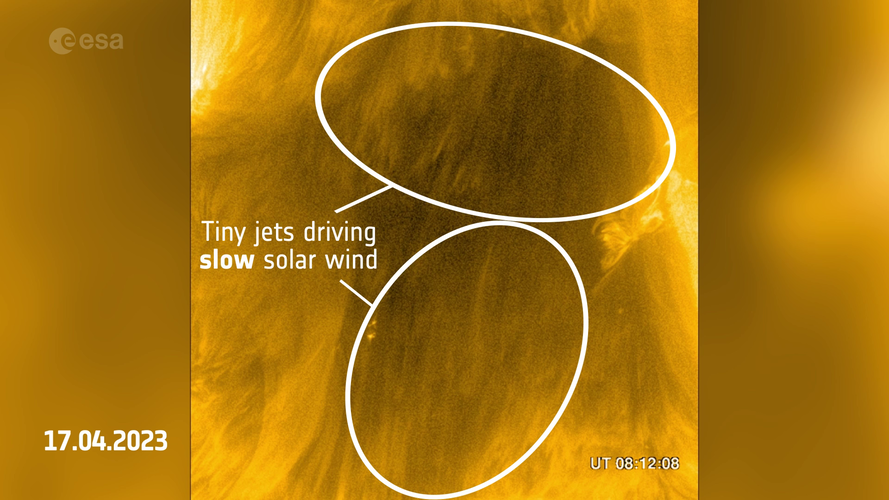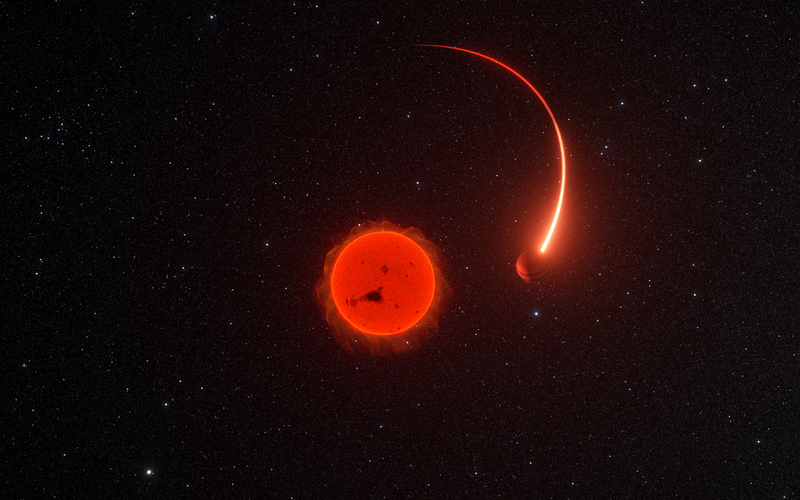Interaction of kinetic waves and suprathermal particles could be key to unlocking heliophysics mystery
Wednesday, 05 February 2025 11:02 A graduate research assistant at The University of Alabama in Huntsville (UAH), a part of The University of Alabama system, has published a paper in the journal Astronomy and Physics that builds on an earlier study to help understand why the solar corona is so hot compared to the surface of the sun itself.
To shed further light on this age-old mystery, Syed Ayaz, a Ph.D. candidate in the U
A graduate research assistant at The University of Alabama in Huntsville (UAH), a part of The University of Alabama system, has published a paper in the journal Astronomy and Physics that builds on an earlier study to help understand why the solar corona is so hot compared to the surface of the sun itself.
To shed further light on this age-old mystery, Syed Ayaz, a Ph.D. candidate in the U NASA Pioneers Autonomous Tools for Satellite Swarms
Wednesday, 05 February 2025 11:02 Coordinate your actions, unify your approach, and collaborate to fulfill a shared objective. This "pep talk" succinctly captures how NASA's latest swarm-based breakthrough operates. Known as Distributed Spacecraft Autonomy (DSA), it allows each satellite to make decisions independently while uniting with fellow spacecraft to pursue collective goals, all free from human oversight.
Within NA
Coordinate your actions, unify your approach, and collaborate to fulfill a shared objective. This "pep talk" succinctly captures how NASA's latest swarm-based breakthrough operates. Known as Distributed Spacecraft Autonomy (DSA), it allows each satellite to make decisions independently while uniting with fellow spacecraft to pursue collective goals, all free from human oversight.
Within NA EUSPA unveils integrated GNSS and secure SATCOM user technology update
Wednesday, 05 February 2025 11:02 The European Union Agency for the Space Programme (EUSPA) has released the very first GNSS and Secure SATCOM User Technology Report, offering a unified resource that addresses two central space-based capabilities.
This new publication builds upon earlier GNSS User Technology and Secure SATCOM Market and User Technology studies, presenting an extensive review of the most recent innovations
The European Union Agency for the Space Programme (EUSPA) has released the very first GNSS and Secure SATCOM User Technology Report, offering a unified resource that addresses two central space-based capabilities.
This new publication builds upon earlier GNSS User Technology and Secure SATCOM Market and User Technology studies, presenting an extensive review of the most recent innovations Zohar rides with SpaceX to enhance real time space weather coverage
Wednesday, 05 February 2025 11:02 Mission Space is preparing to make a major stride forward by sending its new Zohar space weather sensor payload into orbit aboard SpaceX's Transporter-13. This launch marks a significant milestone, as the sensor is designed to deliver continuous readings on solar activity, radiation levels, and magnetospheric variations in real time.
Zohar is placed and managed in Low Earth Orbit (LEO) by
Mission Space is preparing to make a major stride forward by sending its new Zohar space weather sensor payload into orbit aboard SpaceX's Transporter-13. This launch marks a significant milestone, as the sensor is designed to deliver continuous readings on solar activity, radiation levels, and magnetospheric variations in real time.
Zohar is placed and managed in Low Earth Orbit (LEO) by Artist's view of Europe's launcher family from 2024 onwards
Wednesday, 05 February 2025 07:00 Image:
Artist's view of Europe's launcher family from 2024 onwards
Image:
Artist's view of Europe's launcher family from 2024 onwards Scientists spot tiny Sun jets driving fast and slow solar wind
Wednesday, 05 February 2025 07:00 Video:
00:00:40
Video:
00:00:40
Back in 2023, we reported on Solar Orbiter’s discovery of tiny jets near the Sun’s south pole that could be powering the solar wind. The team behind this research has now used even more data from the European Space Agency’s prolific solar mission to confirm that these jets exist all over dark patches in the Sun’s atmosphere, and that they really are a source of not only fast but also slow solar wind.
The newfound jets can be seen in this sped-up video as hair-like wisps that flash very briefly, for example within the circled regions of the
ESA and Finland pave the way towards a supersite for Earth observation
Tuesday, 04 February 2025 14:00
Today, ESA, the Finnish government and the Finnish Meteorological Institute took the initial steps towards establishing a ‘supersite’ for Earth observation calibration and validation in Sodankylä in Finnish Lapland.
Envisaged as a joint investment, this world-class site would bring benefits to both ESA, by helping to further ensure satellites deliver accurate data over high latitude environments, and to Finland by providing Finnish businesses with new opportunities to develop and test environmental sensors and technology.
ESA’s Gaia finds a mysterious planet and brown dwarf
Tuesday, 04 February 2025 13:00 Video:
00:01:40
Video:
00:01:40
Using data from the European Space Agency’s Gaia mission, scientists have found a huge exoplanet and a brown dwarf. This is the first time a planet has been uniquely discovered by Gaia’s ability to sense the gravitational tug or ‘wobble’ the planet induces on a star. Both the planet and brown dwarf are orbiting low-mass stars, a scenario thought to be extremely rare.
Meteor collision shakes Mars recorded by InSight
Tuesday, 04 February 2025 10:37 A space rock crashed into the martian surface in February 2021, generating seismic waves that extended 1640 km to reach NASA's InSight lander. The collision carved out a crater about 21 m wide and disturbed roughly 1400 m. ESA's ExoMars Trace Gas Orbiter (TGO), through its Colour and Stereo Surface Imaging System (CaSSIS), captured the explosive moment.
Marsquakes, the martian counterparts
A space rock crashed into the martian surface in February 2021, generating seismic waves that extended 1640 km to reach NASA's InSight lander. The collision carved out a crater about 21 m wide and disturbed roughly 1400 m. ESA's ExoMars Trace Gas Orbiter (TGO), through its Colour and Stereo Surface Imaging System (CaSSIS), captured the explosive moment.
Marsquakes, the martian counterparts Scientists measure Earth's cosmic detectability
Tuesday, 04 February 2025 10:37 A team of researchers led by Dr. Sofia Sheikh from the SETI Institute, in collaboration with the Characterizing Atmospheric Technosignatures project and the Penn State Extraterrestrial Intelligence Center, investigated whether an extraterrestrial society with technology akin to ours might detect Earth and the evidence of humanity. They sought to identify which signals would be visible and how fa
A team of researchers led by Dr. Sofia Sheikh from the SETI Institute, in collaboration with the Characterizing Atmospheric Technosignatures project and the Penn State Extraterrestrial Intelligence Center, investigated whether an extraterrestrial society with technology akin to ours might detect Earth and the evidence of humanity. They sought to identify which signals would be visible and how fa Space experiment aims to reveal hidden cosmic mass
Tuesday, 04 February 2025 10:37 A space-based effort could soon uncover the nature of dark matter, one of the universe's most perplexing forces. Although invisible, this substance composes nearly 85 percent of cosmic mass, challenging scientists for decades.
Now, a group at the University of Southampton has outlined a strategy to track dark matter by measuring faint disturbances in zero gravity. Researchers plan to fire
A space-based effort could soon uncover the nature of dark matter, one of the universe's most perplexing forces. Although invisible, this substance composes nearly 85 percent of cosmic mass, challenging scientists for decades.
Now, a group at the University of Southampton has outlined a strategy to track dark matter by measuring faint disturbances in zero gravity. Researchers plan to fire Astroscale second generation docking plate gains flight heritage
Tuesday, 04 February 2025 10:37 Astroscale Limited has reached a critical threshold with the first in-space deployment of its second-generation (Gen 2) docking plate. This hardware, now traveling aboard SpaceX's Transporter-12 rideshare mission that launched on Jan 14, 2025, sets the stage for more robust satellite servicing capabilities.
Integrated on an Astro Digital Corvus-XL bus, the Gen 2 docking plate showcases for
Astroscale Limited has reached a critical threshold with the first in-space deployment of its second-generation (Gen 2) docking plate. This hardware, now traveling aboard SpaceX's Transporter-12 rideshare mission that launched on Jan 14, 2025, sets the stage for more robust satellite servicing capabilities.
Integrated on an Astro Digital Corvus-XL bus, the Gen 2 docking plate showcases for EdgeCortix unveils SAKURA-I with proven radiation immunity for orbital and lunar ventures
Tuesday, 04 February 2025 10:37 EdgeCortix(R) Inc., a leading fabless semiconductor provider focused on low-power Artificial Intelligence (AI) computation at the edge, reports that its SAKURA-I AI Accelerator has shown strong radiation endurance and is primed for space missions in Earth orbit and on the lunar surface. NASA's Electronic Parts and Packaging Program (NEPP) performed two rounds of testing on EdgeCortix(R) Inc.'s h
EdgeCortix(R) Inc., a leading fabless semiconductor provider focused on low-power Artificial Intelligence (AI) computation at the edge, reports that its SAKURA-I AI Accelerator has shown strong radiation endurance and is primed for space missions in Earth orbit and on the lunar surface. NASA's Electronic Parts and Packaging Program (NEPP) performed two rounds of testing on EdgeCortix(R) Inc.'s h Orbex lands D-Orbit deal prior to first mission this year
Tuesday, 04 February 2025 10:37 UK-based launch services provider Orbex has finalized a new commercial agreement with D-Orbit, a leading name in space transportation and logistics. This move highlights Orbex's advancing role in the industry as it prepares for its first commercial launch later this year.
Under the arrangement, D-Orbit will secure two launch opportunities on Orbex Prime, the company's eco-conscious micro-l
UK-based launch services provider Orbex has finalized a new commercial agreement with D-Orbit, a leading name in space transportation and logistics. This move highlights Orbex's advancing role in the industry as it prepares for its first commercial launch later this year.
Under the arrangement, D-Orbit will secure two launch opportunities on Orbex Prime, the company's eco-conscious micro-l 

